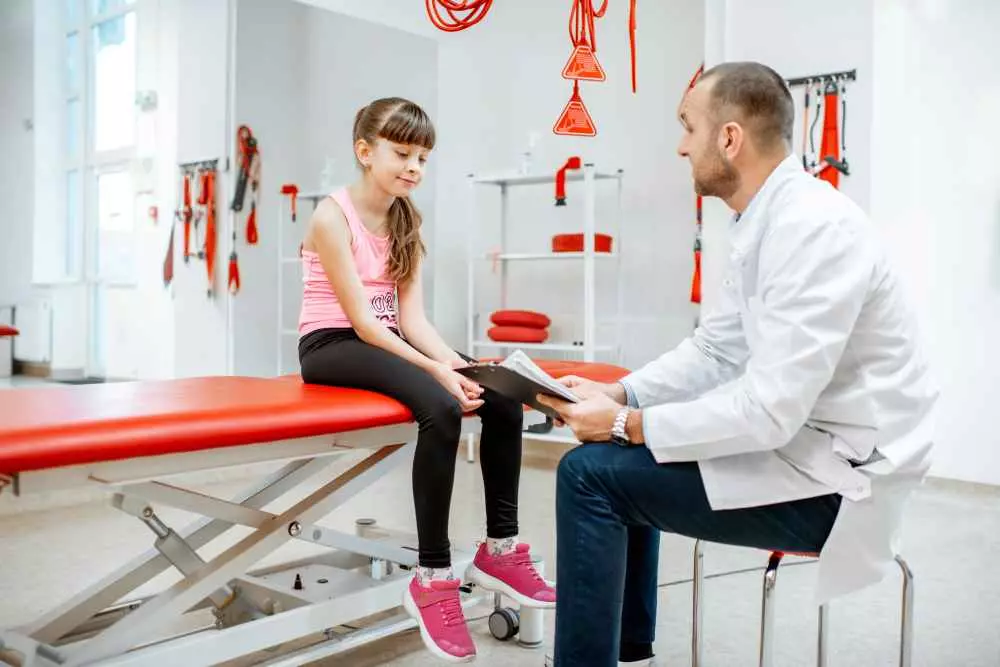Rehabilitation after orthopedic surgery in children and adolescents
Rehabilitation after orthopedic surgery in children and adolescents
Following rehabilitation recommendations after orthopedic surgery is a key part of returning to full physical fitness. In the case of children and adolescents, the rehabilitation process is particularly important because their bodies are still developing, and proper treatment can prevent complications and ensure proper growth and development.
Indications for orthopedic surgery in children
Orthopedicsurgery in children and adolescents is performed for a variety of conditions and injuries, such as congenital postural defects, bone malalignment or joint injuries. The most common surgeries performed are for scoliosis, foot defects, or sports injuries, among others. The decision on the need for surgery depends on a thorough analysis of the patient's condition and an assessment of the possibility of achieving improvement with the procedure.
In cases of congenital postural defects, such as scoliosis or clubfoot, surgery may be unavoidable to repair the malformed skeletal system. In the case of joint injuries, such as ligament ruptures, surgery may be necessary to restore full function to the joint and prevent future problems.
Safety and effectiveness of orthopedic surgery in children
Before undergoing orthopedic surgery in children and adolescents, it is necessary to conduct comprehensive tests, both diagnostic and laboratory, to ensure that the patient is suitable for surgery. In the case of children and adolescents, the safety of the procedure is particularly important, so surgery should only be undertaken if the benefits outweigh the potential risks.
Orthopedic surgeries in children are usually performed under general anesthesia to allow doctors to intervene accurately and ensure patient comfort. Thanks to advances in technology and medicine, such surgeries are becoming more precise, and methods of rehabilitation after surgery are also evolving.
Rehabilitation after orthopedic surgery
After orthopedic surgery in children and adolescents, it is extremely important to start rehabilitation as early as possible. Rehabilitation after surgery aims to restore lost function, increase range of motion, reduce pain and prevent complications.
Rehabilitation exercises play a key role in the process of returning to full physical fitness. The physiotherapist's task is to compose an individualized exercise program tailored to the patient's needs and abilities.
Rehabilitation can include strength, stretching, balance and coordination exercises. Strength exercises are designed to strengthen the muscles around the operated area, helping to stabilize the joint and improve overall motor function. Stretching exercises help increase tissue flexibility and improve joint range of motion, while balance and coordination exercises aim to improve balance and motor control.
In addition to exercise, physical therapy also plays an important role in the rehabilitation process. Physical therapy can include manual therapy, electrostimulation, electrotherapy, massage or treatments using devices such as lasers or ultrasound. The choice of specific therapeutic methods depends on the type of treatment and the progress of the rehabilitation process.
Individual approach to the patient
Every patient has different needs and abilities, so an individual approach to rehabilitation after orthopedic surgery is important. Physiotherapists and doctors should monitor the patient's progress and modify the rehabilitation program to suit the changing condition.
For children and adolescents, rehabilitation after orthopedic surgery should also take into account psychological factors. Many young patients may feel frustration or anxiety about the limitations caused by surgery and recovery. It is important for the entire medical team to provide emotional and motivational support for the patient to enable them to return to physical activity in a healthy and complete manner.
Summary
Rehabilitation after orthopedic surgery in children and adolescents is critical to returning to full physical function. Adherence to rehabilitation recommendations and regular exercise and physical therapy contributes to a successful return to physical activity and prevents the occurrence of complications. The key to success is an individual approach to the patient and consideration of his or her needs and abilities. Rehabilitation after orthopedic surgery is a process that requires time, commitment and professional support to guarantee an optimal therapeutic outcome.
Add comment